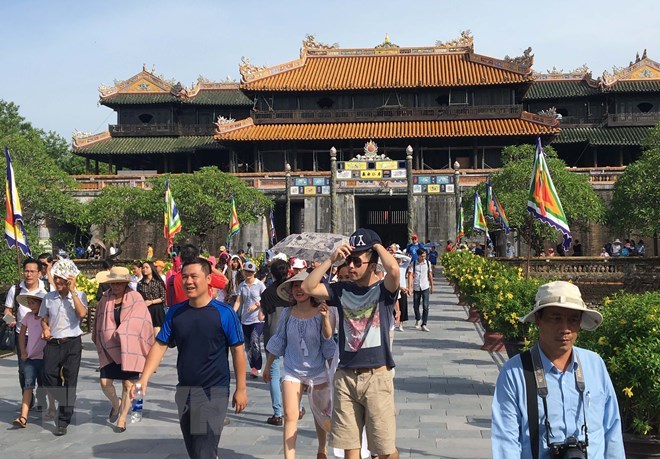



At Hue
ancient citadel relic complex (Source: VNA)
Holidaymakers
to the Hue ancient capital city on those days will have a chance to participate
in royal games and enjoy calligraphy and martial arts performances, along with
traditional dragon and lion dances.
As part of activities welcoming the arrival of Tet, the biggest and most
important festival year-round in Vietnam, the Hue Monuments Conservation Centre
will re-enact the Neu tree planting ceremony, a traditional ritual practised
under the Nguyen Dynasty (1802-1945) on January 28 (the 23rd day of the last
lunar month).
There will also be an array of activities such as wrapping chung cake (a
traditional Tet novelty cake made from glutinous rice).
In 2018, the Hue Monuments Conservation Centre earned 381.7 billion VND (16.4
million USD) from serving over 3.5 million tourists, up 19 percent compared to
the target set.
The centre has implemented 24 restoration projects with total investment
exceeding 278.8 billion VND (11.9 million USD).
Hue, the formal imperial capital of Vietnam for hundreds of years, is home to
five heritages recognised by UNESCO, including the ancient citadel relic
complex (a World Cultural Heritage site), Hue royal court music (an intangible
cultural heritage item), Nguyen Dynasty’s wood blocks (a documentary heritage
item), Nguyen Dynasty’s royal administrative documents (part of the
Asia-Pacific Register of UNESCO’s Memory of the World Programme), and
literature on Hue royal architecture (another documentary heritage).
The Hue imperial citadel relic site has been ranked second among the top seven
tourist attractions of Vietnam in 2017.
Source: VNA